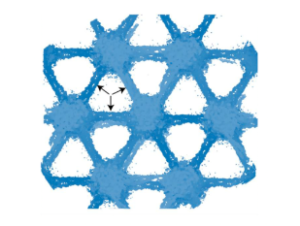Quentin Gaday1, Daniela Megrian1, Giacomo Carloni1, Mariano Martinez1, Mathilde B. Assaya1, Anne Marie Wehenkel1, Pedro Alzari1
1Unité de Microbiologie Structurale, Institut Pasteur, CNRS, Université Paris Cité, Paris 75015, France

Bacterial cells are surrounded by a mesh-like structure called peptidoglycan (PG) which represents the main component of the cell wall. PG is built of alternating sugar moieties covalently cross-linked by short peptide stems, this repetitive pattern results in a dense multi-layer which is critical for maintaining cell shape and withstanding osmotic pressure. During cell division and growth, a battery of enzymes is involved in the remodeling of PG, which must be carefully broken down to allow the incorporation of newly synthetized glycan strands and finally allow the physical separation of the two daughter cells. In the order of Corynebacteriales, which includes important human pathogens such as Mycobacterium tuberculosis (Mtb) and Corynebacterium diphtheriae, the D,L endopeptidase RipA has been known for a long time as the major PG hydrolase involved in cell separation. RipA depletion results in the formation of elongated multiseptal cells and leads to reduced Mtb replication in macrophages and to clearance of Mtb in infected mice. Due to its fundamental role in Corynebacteriales cell division, RipA has been extensively studied but no conclusive evidence has been produced to account for its regulation and coordination with the cell division machinery. Recently, the full length RipA homologue from Corynebacterium glutamicum (Cg1735) has been structurally characterized in our group in two different crystals form1. These structures reveal that the enzyme is blocked in an autoinhibited conformation with the C-terminal NlpC/P60 catalytic domain obtruded by the N-terminal conserved coiled-coil domain. We show that this autoinhibition is relieved by the conserved septal transmembrane protein Cg1604 and solved the structure of the Cg1604 extracellular globular domain. Bioinformatic and biochemical analyses allowed us to show how Cg1604 interacts with RipA through its N-terminal coiled-coil and we have recently validated this model for Mtb homologous proteins. Our results suggest a conserved regulation mechanism for RipA in Corynebacteriales and opens up new exciting avenues for future investigations.
References
[1] Gaday, Q. et al. (2022) ‘FtsEX-independent control of RipA-mediated cell separation in Corynebacteriales’, Proceedings of the National Academy of Sciences, 119(50), p. e2214599119.
Available at: https://doi.org/10.1073/pnas.2214599119
Keywords: corynebacterialee; bacterial cell division; peptidoglycan; structural biology
